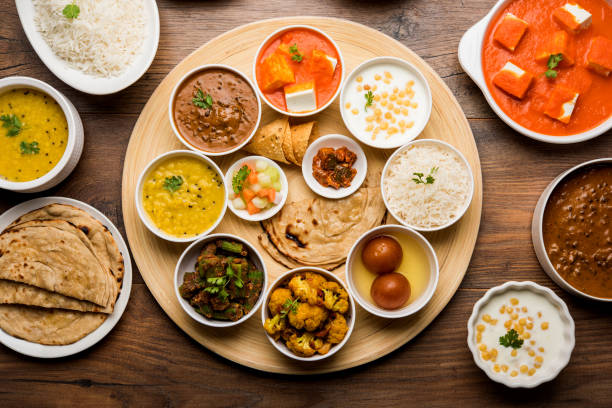Holidays are a time for giving thanks, connecting with family, and looking forward to the future. This festive season ends for those who celebrate Kwanzaa, and the new year starts with a celebration of pan-African history and culture. From December 26 to January 1, observers light candles and commemorate important principles and ideals. They also spend time with family and friends.
If you are preparing for your first Kwanzaa or you need to refresh on the terminology, this is the place to go. This is the language that you need to learn to understand Kwanzaa. It includes the origins of the name, the seven principles, and the symbols.
What is Kwanzaa?
Kwanzaa was created in the 1960s. Maulana Karanga, an African-American scholar and activist, created Kwanzaa when he was just 25 years old. Maulana Karenga combined elements of various African harvest festivals to highlight the strength and values of the African-American community. In an interview with a newspaper in 2008, Karenga stated that he wanted to create the holiday so “Blacks could celebrate themselves and their histories.”
Kwanzaa celebrates African heritage and Black Culture. It’s also meant as a counter-holiday to holidays that center on mainstream culture and consumerism. Although it is most common in the United States and other countries, the African diaspora also celebrates Kwanzaa. A 2012 study found that approximately 4 percent (or more than 12 million people) of Americans celebrated Kwanzaa.
Learn new words every day!
This holiday was named after the Swahili term Kwanza, which means “first and foremost.” It is also a reference to the Swahili phrase matundayakwanza or “first fruits” from African harvest celebrations. Karenga created Kwanza by using African harvest festivals because the aspects that contribute to a successful harvest help to build and maintain a strong community.
Kwanzaa has an additional -a added to the end of the original Swahili word. The extra letter is believed to have been added in order for each of the seven participants in the first Kwanzaa celebrations in 1966 to receive a letter. It’s a fitting number since seven is a significant number in Kwanzaa, and it runs throughout many aspects of this holiday. Seven days are dedicated to Kwanzaa. There are also seven symbols and seven candles used in the rituals.
Kwanzaa and
Kwanzaa, along with Christmas, Hanukkah, and New Year’s Day, is part of the holiday season. It is a secular celebration and not associated with any organized religion. Many people who celebrate Kwanzaa also celebrate other holidays in the same season.
Kwanzaa
The seven-day celebration is defined by seven principles of Kwanzaa (or Nguzu Saba), which are usually referred to by their Swahili words. Each code is given a specific day to discuss what it means. The seven principles include:
- Umoja (unity)
- Kujichagulia (self-determination)
- Ujima is a collective work and responsibility.
- Ujamaa (cooperative economics)
- Nia (purpose).
- Kuumba (creativity)
- Imani (faith).
On each of the seven Kwanzaa days, people greet each other using the Swahili phrase “What’s the news?” Habari Gani. The principle of the day is expected to be the response (for instance, “Umoja” on the first day).
While the specifics of each family’s celebration of Kwanzaa may vary, family gatherings and storytelling are common. Another commonality is the seven symbols. The seven-candle set ( Mishumaa Saba ) is the primary symbol. It plays an important role in the celebration. Three green candles, a black candle, and three red are placed into a Kinara or candle holder. Other important symbols include ears of corn (muhindi), a mat, crops (mazao), gifts (zawadi), and the ceremonial unity cup kikombe-cha-umoja.
New Year’s Eve is the second-to-last Day of Kwanzaa. The celebration is called Karamu and includes food, drinks, and music. Imani is the day when Imani kids receive their gifts. These are called Zawadi and can be Handmade by Black businesses or Gifts.
Auld Lang Syne is a song that’s often sung on New Year’s Eve.
What is the significance of the Kwanzaa candles?
The candles are central to one of the most important Kwanzaa Rituals. The black candle always occupies the center, while the red and green candles are placed on either side. Marcus Garvey named these colors to represent the African diaspora. Red means the struggle, black represents the people, and green represents the future.
Each day, before lighting the candles, the whole family gathers to begin the ritual. This is a form of African praise for their ancestors. The elder of the house pours alcohol or non-alcoholic drinks from the unity cup (kikombe chaumoja) and remembers friends and family members who have passed away. They then drink wine or juice from the Kikombe cha Umoja and pass the cup to other people to do the same thing.
Candle lighting also allows the family to discuss what the principle for the day means. The first candle, the black one, is lit on December 26. After that, the other candles are lit each day in an alternate left-to-right pattern until the end of Kwanzaa, which occurs on January 1.

